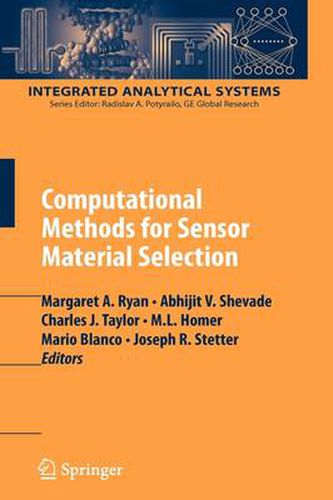Readings Newsletter
Become a Readings Member to make your shopping experience even easier.
Sign in or sign up for free!
You’re not far away from qualifying for FREE standard shipping within Australia
You’ve qualified for FREE standard shipping within Australia
The cart is loading…






This title is printed to order. This book may have been self-published. If so, we cannot guarantee the quality of the content. In the main most books will have gone through the editing process however some may not. We therefore suggest that you be aware of this before ordering this book. If in doubt check either the author or publisher’s details as we are unable to accept any returns unless they are faulty. Please contact us if you have any questions.
Chemical vapor sensing arrays have grown in popularity over the past two decades, finding applications for tasks such as process control, environmental monitoring, and medical diagnosis. This is the first in-depth analysis of the process of choosing materials and components for these electronic noses , with special emphasis on computational methods. For a view of component selection with an experimental perspective, readers may refer to the complementary volume of Integrated Microanalytical Systems entitled Combinatorial Methodologies for Sensor Materials.
$9.00 standard shipping within Australia
FREE standard shipping within Australia for orders over $100.00
Express & International shipping calculated at checkout
This title is printed to order. This book may have been self-published. If so, we cannot guarantee the quality of the content. In the main most books will have gone through the editing process however some may not. We therefore suggest that you be aware of this before ordering this book. If in doubt check either the author or publisher’s details as we are unable to accept any returns unless they are faulty. Please contact us if you have any questions.
Chemical vapor sensing arrays have grown in popularity over the past two decades, finding applications for tasks such as process control, environmental monitoring, and medical diagnosis. This is the first in-depth analysis of the process of choosing materials and components for these electronic noses , with special emphasis on computational methods. For a view of component selection with an experimental perspective, readers may refer to the complementary volume of Integrated Microanalytical Systems entitled Combinatorial Methodologies for Sensor Materials.